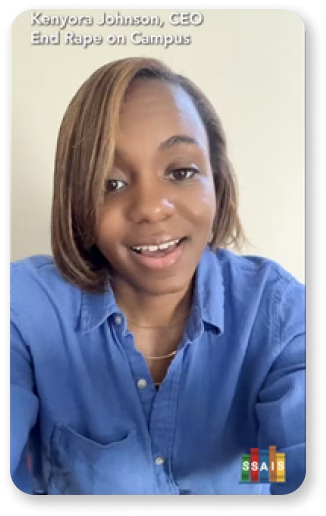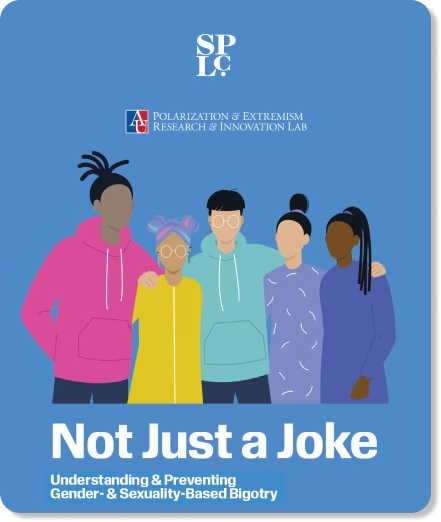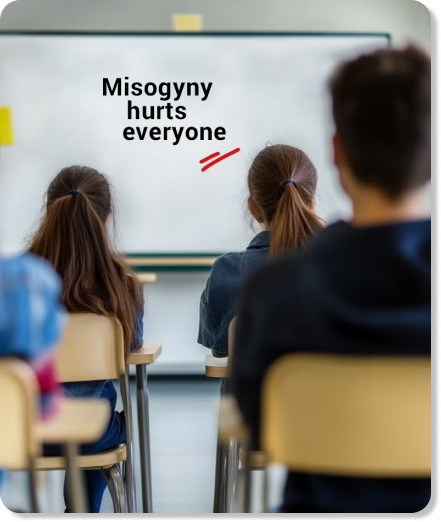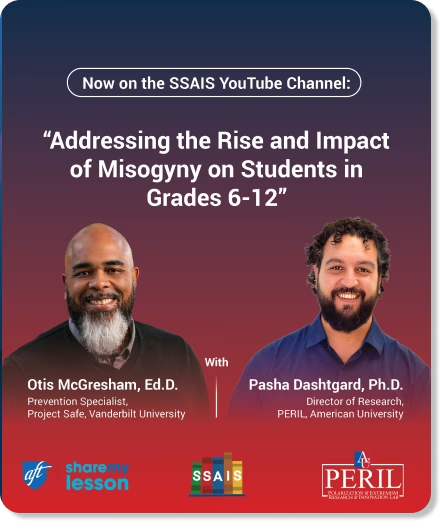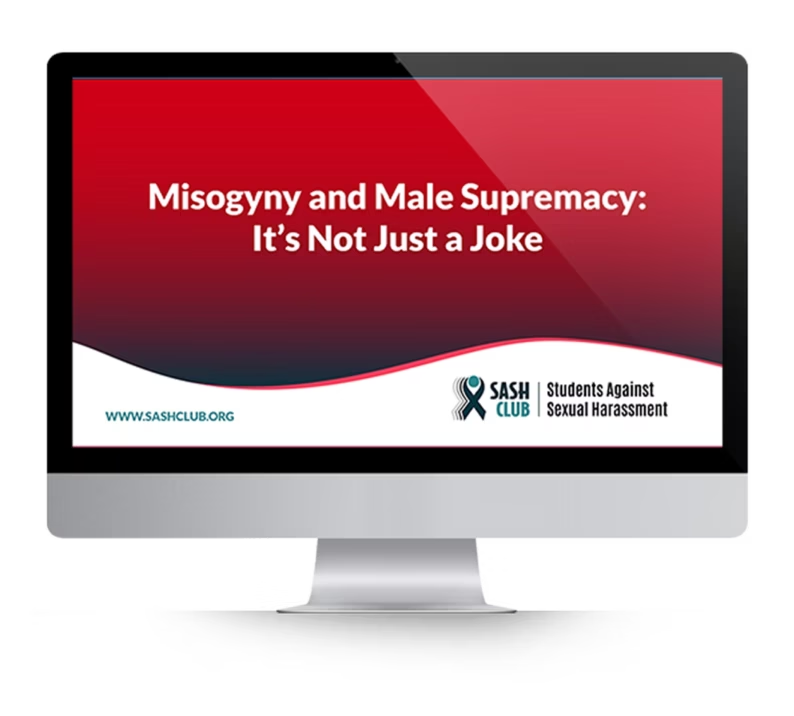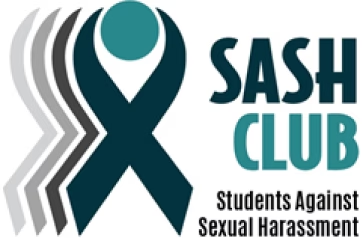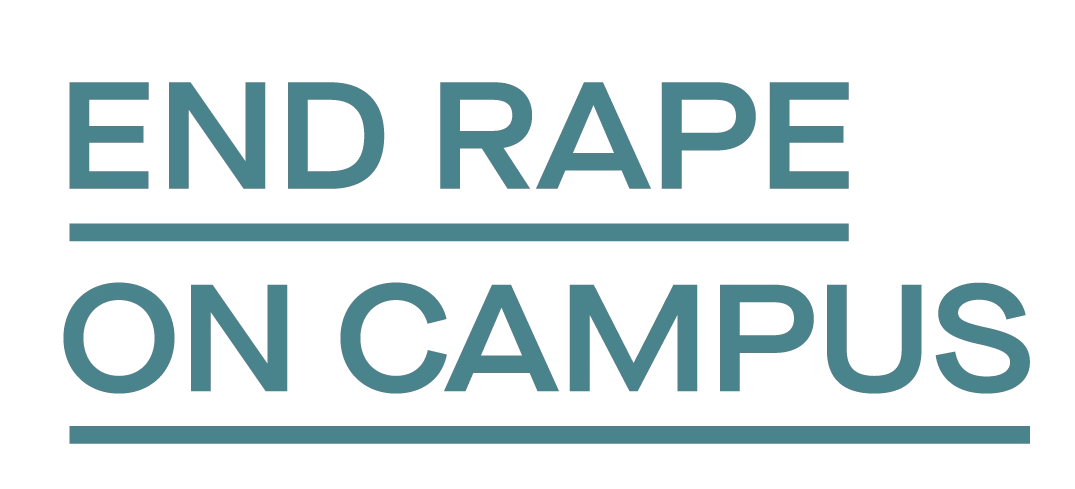#MisogynyFreeSchools™
#MisogynyFreeSchools™
#MisogynyFreeSchools, an initiative of Stop Sexual Assault in Schools, combats the alarming rise of misogyny, hostile sexism, and gender bias that is impacting youth and shaping the next generation. #MisogynyFreeSchools is here to disrupt the cycle. Are you in?
How can I get involved?
Urgent action is needed to combat sexism in schools! Join the movement to call out, challenge, and change the toxic norms. Together, we can dismantle misogyny in schools to create a future where all youth can reach their full potential, free from the limitation and oppression of gender bias.
It’s not just a joke! From microaggressions to blatant sexism, girls, gender expansive youth, and males—including young children, school staff, and perpetrators—are all victims of harmful beliefs and behaviors.
What does it look like?
Children in preschool yelling “bit*h,” boys in elementary school chanting “your body, my choice,” rape “jokes,” schools normalizing misogynistic behavior as “boys will be boys,” calling LGBTQ+ youth “unnatural,” boys intimidating teachers about their bodies, circulating deepfake photos of both teachers and students.
“I don’t know if I’ll ever be able to stand in front of a classroom in Indianapolis again.”
Angela Tipton, a teacher for 20 years and targeted in a deepfake image.–Politico
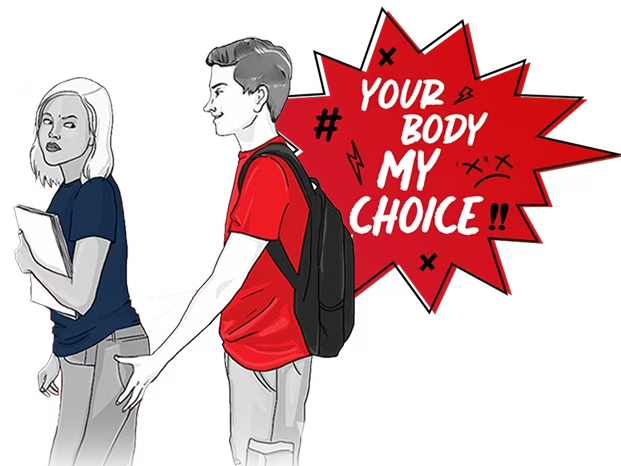

Dr. Pasha Dashtgard reports on incidents involving both students and teachers.
“A private middle school where 3 students were using AI undressing apps on their classmates; a public high school where school leadership found a groupchat with incredibly disturbing audio content of an assault being shared and mocked; a university student whose parents reached out to me because he dropped out of school, was found with doctored passports, and was planning on traveling to South America to start up a Cam Girl business, inspired by Andrew Tate and his Pimping Hoes Degree (PHD) program.”
Misogyny in Schools: Quick Facts
Misogynistic attitudes and behaviors have existed for a long time. What's different now?
- Social media & the internet
- Amplifying misogyny: TikTok, YouTube, Instagram, and other internet platforms expose youth to influencers who promote rigid and narrow gender narratives in the manosphere. Misogynists like Andrew Tate have become increasingly popular among boys, reinforcing toxic masculinity and disrespect toward women, LGBTQ+ people, and those who do not conform to their beliefs. Influencers and some elected officials espouse and engage in misogynistic behavior.
- Normalizing harmful beliefs: Misogynistic memes, jokes, and ideologies circulate widely, normalizing sexist attitudes among children, starting in elementary school.
- Online harassment: Girls, LGBTQ+ youth, and males who do not fit the messaging of the manosphere are experiencing harassment at younger ages, including hostile messages, body-shaming, and doxxing.
- Changing gender dynamics and backlash
- Female empowerment: Progress in gender equality has led to reactionary pushback from some boys who feel threatened by shifting gender norms.
- Anti-feminism: Some boys believe they are being “oppressed” by feminism, driving resentment and resistance to discussions about sexism.
- Earlier exposure to pornography
- Unrealistic and harmful depictions of sexuality: Youth are exposed to extreme, violent, or degrading porn at an early age, shaping their expectations about gender roles and relationships.
- Sexualization of girls: Misogynistic attitudes toward women’s bodies and consent are reinforced, leading to increased harassment in schools.
- Increased social awareness
- More conversations about gender and consent: Schools, parents, and media are increasingly made aware of misogyny among youth.
- Greater resistance and pushback: Those who openly challenge misogyny are provoking strong reactions and pushback.
How does misogyny affect girls?
- Mental health effects: Misogyny contributes to anxiety, depression, body image issues, and suicide. Many girls become victims of shaming.
- Normalization of harassment: Unchallenged sexist jokes or dismissive attitudes toward girls lead to tolerance of harassment and assault.
- Classroom participation: Girls are discouraged from speaking up in class because they fear being dismissed or ridiculed.
- Narrowed career goals: Girls may avoid certain subjects or careers due to stereotypes that suggest they are less capable in certain fields.
- Reduced self-confidence: Sexist speech and behavior leads many girls to doubt their abilities, especially in male-dominated fields like STEM.
How does misogyny affect boys?
- Rigid masculine norms: Exposure to misogynistic views reinforces harmful ideas that boys must be dominant, emotionally detached, and aggressive, thereby stunting their emotional and social development.
- Boys who don’t fit “traditional masculinity” face harassment. Because misogyny teaches that being “feminine” is weak, boys who don’t fit a hypermasculine stereotype—whether they’re gay, bisexual, or not aggressive in nature—are often targeted. Examples: Assuming a boy is gay just because he’s not aggressive or into sports. “That’s so gay” used as an insult, calling boys derogatory terms or “not real men” for showing emotions.
- Peer pressure: Boys feel pressured to conform to sexist behaviors to fit in with peers.
- Difficulty forming healthy relationships: Misogynistic beliefs hinder boys from developing respectful and equal relationships with girls.
- Suppressing feelings: A culture of hypermasculinity discourages boys from expressing vulnerability, promoting emotional struggles.
- Sexual aggression: Sexual objectification of girls and women can lead to sexual assault, domestic violence, and radical extremism.
How does misogyny affect LGBTQ+ students?
- Many LGBTQ+ youth face bullying, exclusion, and discrimination due to the same sexist beliefs that fuel misogyny. Gay men face hated because they’re “too feminine.” Lesbian women are dismissed because they “reject men.” Trans & nonbinary people are seen as a “threat” to gender norms.
- LGBTQ+ boys feel pressured to “prove” their masculinity by acting tough or hiding their true feelings and identity. High rates of anxiety and depression.
- Lesbian and bi girls face sexualization and erasure. Misogyny objectifies women, including LGBTQ+ girls. Examples: Hypersexualization: “Lesbians are hot” (treating LGBTQ+ girls as sexual fantasies). Erasure: “You just haven’t met the right guy yet” (canceling their identity). Harassment: Some men feel entitled to “convert” a lesbian or pressure bisexual girls into dating men. Lesbian and bi girls feel unseen or disrespected—as if they exist only for male entertainment. They may struggle with self-worth and setting boundaries in relationships.
- Trans and nonbinary students are targeted for “not following gender rules.” Misogyny reinforces strict gender roles and leads to homophobia and transphobia: trans and nonbinary students face hostility simply for existing. Examples: Trans girls are told they’re “just confused boys.” Nonbinary students are mocked for using different pronouns. Schools enforce gendered dress codes that punish kids for dressing in a way that matches their identity.
- Impact: Limited school safety: many trans/nonbinary students fear using the bathroom that aligns with their identity. High rates of sexual harassment and mental health struggles: 51% of trans & nonbinary youth have seriously considered suicide (The Trevor Project, 2022).
What can schools and adults do to address misogyny and gender bias?
What can youth do to combat misogyny and gender bias?
Engage in peer education, discussions, and advocacy starting with this youth friendly resource. This new presentation introduces youth age 12+ to the rise of misogyny, prompts discussion, and offers suggestions on responding to incidents.
Around the world:
Podcasts, Articles, Videos and Organizations
Contact us to share your resources.

Steven Roberts and Stephanie Wescott at Monash University research misogyny in Australian schools. Explore Gendered violence in schools: Urgent need for prevention and intervention amid rising hostilities and What schools should do now the manosphere thinks it’s back in charge.



